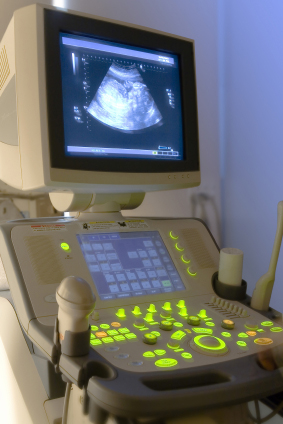How Does Ultrasound Work and Is It Safe?
Ultrasound technology works by employing a high frequency of sound that travels from a transducer through the skin and into the body, where sound bounces off of internal structures. These echoes are converted through ultrasound equipment into an image that a technician (and the subject) can view on a screen.

According to the U.S. Centers for Disease Control, around 2.7 million women, or 67 percent of all pregnant women, received fetal ultrasounds in 2000.
The U.S. Food and Drug Administration (FDA) acknowledges that ultrasound has been used in pregnant women for more than 35 years with no “obvious detrimental effects.†There is evidence that ultrasounds cause vibrations and raise temperatures (“thermal effects.â€) The FDA’s official stance is that fetal ultrasounds should only be used for diagnostic purposes. (Read more from the FDA below.)
Following are some quotes from various medical organizations on ultrasound effects on a fetus, the overall safety of ultrasounds and where they stand on using ultrasounds for nonmedical purposes.
The American Pregnancy Association states, “The ultrasound is a noninvasive procedure that, when used properly, has not demonstrated fetal harm. The long term effects of repeated ultrasound exposures on the fetus are not fully known. It is recommended that ultrasound only be used if medically indicated.”
The American Institute of Ultrasound in Medicine (AIUM) states, “There are no known harmful effects associated with the medical use of sonography. Widespread clinical use of diagnostic ultrasound for many years has not revealed any harmful effects. Studies in humans have revealed no direct link between the use of diagnostic ultrasound and any adverse outcome.†However, the AIUM in 1999 went on record against “the non-medical use of ultrasound for psychosocial or entertainment purposes,†including using 2D or 3D solely to determine gender.
Similar statements have been adopted by the American College of Radiology, the American College of Obstetricians and Gynecologists and the American Medical Association.
The World Health Organization (WHO) of the United Nations released a statement in 1982 saying that the benefits of ultrasound outweigh any presumed risks, but that “patients should be examined with ultrasound only for valid clinical reasons.â€
The FDA updated its stance on fetal ultrasound in August 2005. The FDA is “concerned about this misuse of diagnostic ultrasound equipment,†particularly the length of time the fetus may be exposed to ultrasound in nonmedical settings. Here’s more: “From a medical standpoint, ultrasonic fetal scanning is generally considered safe and is properly used when medical information on a pregnancy is needed. But ultrasound energy delivered to the fetus cannot be regarded as completely innocuous. Laboratory studies have shown that diagnostic levels of ultrasound can produce physical effects in tissue, such as mechanical vibrations and rise in temperature. Although there is no evidence that these physical effects can harm the fetus, public health experts, clinicians and industry agree that casual exposure to ultrasound, especially during pregnancy, should be avoided. Viewed in this light, exposing the fetus to ultrasound with no anticipation of medical benefit is not justified.â€